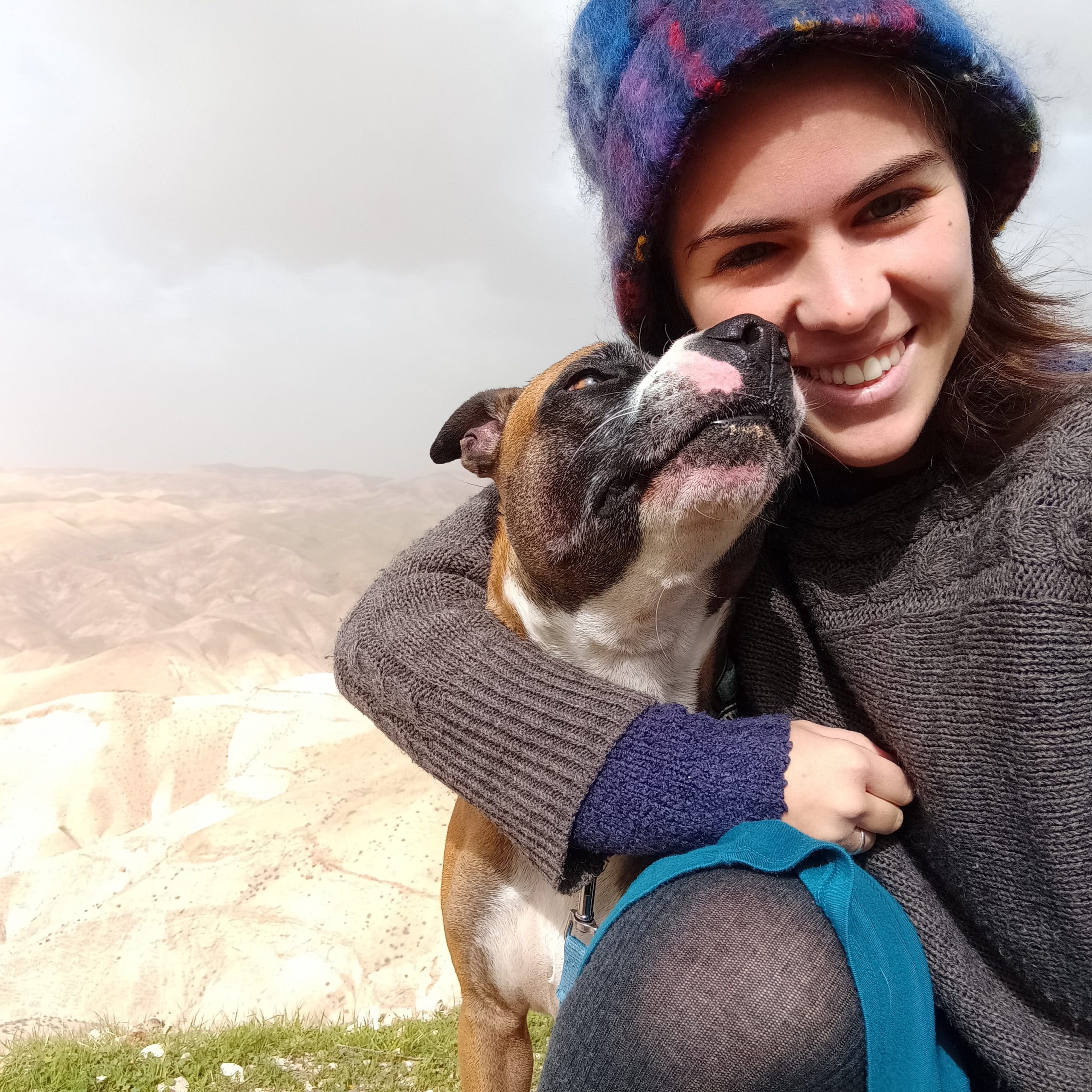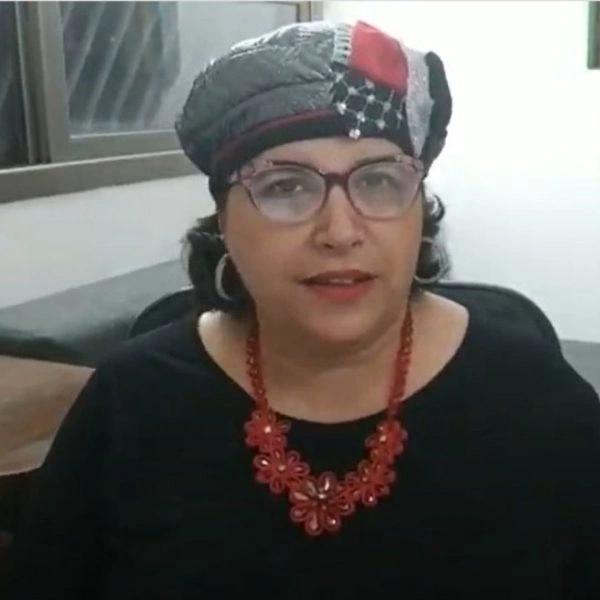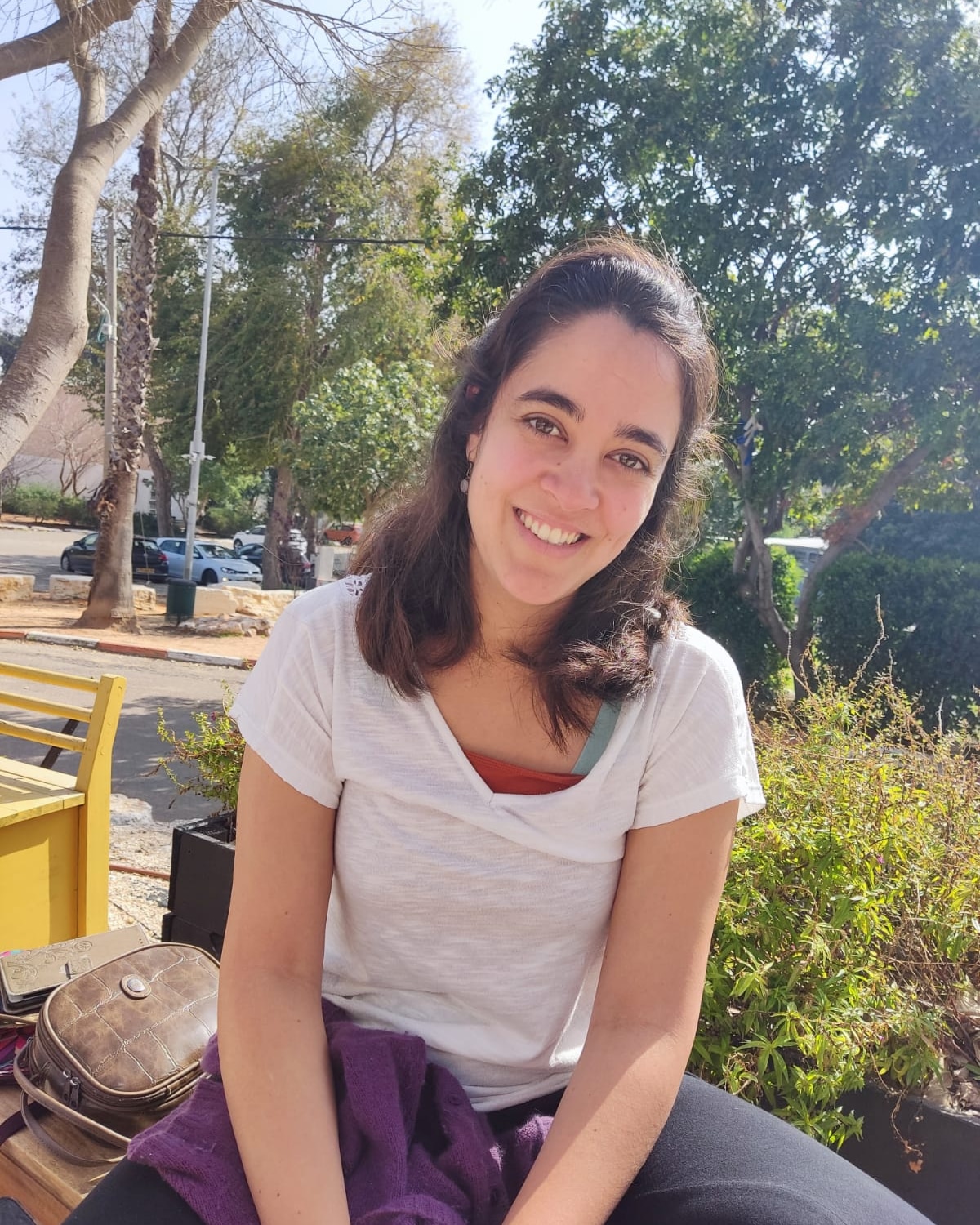שבועות ו׳
הַאי מַאי? בִּשְׁלָמָא בְּלָא סִיד הֵיכָל, קְרוּם בֵּיצָה לָא קַשְׁיָא – דְּאַף עַל גַּב דִּקְרוּם בֵּיצָה מִתַּתַּאי דִּשְׂאֵת, רַחֲמָנָא אָמַר ״וְלַשְׂאֵת וְלַסַּפַּחַת״ – סַפַּחַת טְפֵילָה לַשְּׂאֵת, אַף עַל גַּב דְּמִנַּחֲתָא מִינַּיהּ טוּבָא. אֶלָּא סִיד הֵיכָל – קַשְׁיָא, אֶלָּא מְחַוַּורְתָּא מַתְנִיתִין דְּלָא כְּרַבִּי עֲקִיבָא.
The Gemara answers: What is this comparison? Granted, it would all be well were it not for the difficulty with regard to a mark the color of the lime plaster of the Sanctuary walls, as the difficulty raised with regard to an egg membrane–colored mark is not difficult. As even though the shade of an egg membrane is two stages below that of a se’et, the Merciful One states: “And for a se’et and for a sappaḥat” (Leviticus 14:56), which indicates that a sappaḥat is secondary to a se’et and can combine with it even though a sappaḥat is of a much lower degree of brightness than it. Rabbi Akiva holds that both of the additional shades not explicitly mentioned in the Torah are derived from the word: Sappaḥat, and so both of them can combine with a se’et. But the difficulty raised with regard to a mark the color of the lime plaster of the Sanctuary walls is indeed difficult. Rather, it is clear that the mishna is not in accordance with the opinion of Rabbi Akiva.
וְהֵיכָא שָׁמְעִינַן לְרַבִּי עֲקִיבָא זוֹ לְמַעְלָה מִזּוֹ?
§ The Gemara elaborates on Rabbi Akiva’s opinion: And where have we learned that according to Rabbi Akiva the different shades should be ordered this one above that one, i.e., according to their degrees of brightness, and only two adjacent shades can combine together?
אִילֵּימָא מֵהָא – דְּתַנְיָא: אָמַר רַבִּי יוֹסֵי, שָׁאַל יְהוֹשֻׁעַ בְּנוֹ שֶׁל רַבִּי עֲקִיבָא מֵרַבִּי עֲקִיבָא: מִפְּנֵי מָה אָמְרוּ מַרְאוֹת נְגָעִים שְׁנַיִם שֶׁהֵן אַרְבָּעָה? אָמַר לוֹ: וְאִם לָאו, מָה יֹאמְרוּ? יֹאמְרוּ מִקְּרוּם בֵּיצָה וּלְמַעְלָה טָמֵא!
If we say we learned it from that which is taught in the following baraita, it is difficult. The baraita teaches: Rabbi Yosei said that Yehoshua, son of Rabbi Akiva, asked of Rabbi Akiva: For what reason did the Sages say that the different shades of leprous marks are two types that are four, and proceed to specify their names? Rabbi Akiva said to him: But if not that, what else could they say? Rabbi Yehoshua answered him: Let them say that any mark of a degree of brightness from that of an egg membrane and above is ritually impure.
אָמַר לוֹ: לוֹמַר שֶׁמִּצְטָרְפִים זֶה עִם זֶה. אָמַר לוֹ, וְיֹאמְרוּ: ״מִקְּרוּם בֵּיצָה וּלְמַעְלָה טָמֵא, וּמִצְטָרְפִין זֶה עִם זֶה״! אָמַר לוֹ: לוֹמַר לָךְ, כׇּל כֹּהֵן שֶׁאֵינוֹ בָּקִי בָּהֶן וּבִשְׁמוֹתֵיהֶן, אֵינוֹ רוֹאֶה אֶת הַנְּגָעִים.
Rabbi Akiva said to him: They specified the four different shades in order to say that they combine with each other in that order, i.e., each one with its adjacent shade. Rabbi Yehoshua said to him: If so, let them simply say: Any mark of a degree of brightness from that of an egg membrane and above is ritually impure, and they combine with each other. Rabbi Akiva said to him: They specified their names in order to tell you: Any priest who is not an expert in distinguishing between them and in identifying their names is not authorized to inspect the leprous marks and make a decision regarding them.
וְאִילּוּ ״מִסִּיד הֵיכָל וּלְמַעְלָה״ – לָא קָאָמַר;
The Gemara explains the difficulty: Rabbi Yehoshua suggested that according to Rabbi Akiva’s opinion it should be sufficient to say that any mark of a degree of brightness from that of an egg membrane and upward is impure, but he did not say that it would also be necessary to add: And any mark of a degree of brightness from that of the lime plaster of the Sanctuary walls and above is impure. If Rabbi Akiva agrees to the categorization of the mishna, then it would be necessary to state separately each category of marks, in a dual formulation, in order to indicate that only shades that are categorized together can combine.
מִדְּלָא אֲמַר לֵיהּ, שְׁמַע מִינַּהּ דִּשְׁמִיעַ לֵיהּ לְרַבִּי עֲקִיבָא דְּאָמַר: כּוּלְּהוּ לְבַהֲדֵי שְׂאֵת מִצְטָרְפִין.
The Gemara suggests: Conclude from the fact that he did not say this to Rabbi Akiva that Rabbi Yehoshua heard of Rabbi Akiva that he says: All the different shades combine with a se’et. Accordingly, both a snow-white baheret and a lime-colored mark will each combine with a se’et, as they are adjacent to it when listed in order of their degrees of brightness. An egg membrane–colored mark will also combine with a se’et, as it is derived from the word: Sappaḥat, and the Torah indicates that a sappaḥat is secondary to a se’et.
וְדִלְמָא ״שְׂאֵת וְתוֹלַדְתָּהּ״, ״בַּהֶרֶת וְתוֹלַדְתָּהּ״?
The Gemara rejects this proof: But perhaps Rabbi Akiva does hold that the only combinations possible are a se’et and its secondary mark, i.e., an egg membrane–colored mark; and a baheret and its secondary mark, i.e., a lime-colored mark. And perhaps Rabbi Yehoshua in fact proposed that the Sages should use a dual formulation, but the baraita cites only the first half of his suggestion.
אֶלָּא מִדְּרַבִּי חֲנִינָא – דְּאָמַר רַבִּי חֲנִינָא: מָשָׁל דְּרַבִּי עֲקִיבָא לְמָה הַדָּבָר דּוֹמֶה? לְאַרְבָּעָה כּוֹסוֹת שֶׁל חָלָב, אֶחָד נָפְלוּ לְתוֹכוֹ שְׁתֵּי טִיפִּין שֶׁל דָּם, וְאֶחָד נָפְלוּ לְתוֹכוֹ אַרְבַּע טִיפִּין שֶׁל דָּם, וְאֶחָד נָפְלוּ לְתוֹכוֹ שְׁמוֹנֶה, וְאֶחָד נָפְלוּ לְתוֹכוֹ שְׁתֵּים עֶשְׂרֵה טִיפִּין – וְאָמְרִי לַהּ: שֵׁשׁ עֶשְׂרֵה טִיפִּין – שֶׁכּוּלָּן מַרְאוֹת לוֹבֶן הֵן, אֶלָּא שֶׁזֶּה לְמַעְלָה מִזֶּה וְזֶה לְמַעְלָה מִזֶּה.
Rather, Rabbi Akiva’s opinion can be inferred from that which Rabbi Ḥanina says, as Rabbi Ḥanina says: The following is an analogy to illustrate the opinion of Rabbi Akiva: To what is this matter comparable? It is comparable to four cups of milk, and two drops of blood fell into one of them, and four drops of blood fell into another one of them, and eight drops of blood fell into another one, and twelve drops of blood fell into the last one. And some say that sixteen drops fell into the last cup. This is a suitable analogy, as the milk in all of the cups still has a similar shade of white, but the cups can be ordered according to their degrees of brightness, as this one is above this one, and that one is above that one. Rabbi Ḥanina’s analogy would appear to portray Rabbi Akiva’s opinion in the same way it was cited earlier.
אֵימוֹר דְּשָׁמְעַתְּ לֵיהּ לְרַבִּי עֲקִיבָא – בְּפָתוּךְ; בְּחָלוּק מִי שָׁמְעַתְּ לֵיהּ?
The Gemara rejects this. The Torah states that a “reddish-white affliction” (Leviticus 13:42), not just a flawless white one, renders a person ritually impure. Therefore, the Gemara suggests: Say that you heard Rabbi Akiva express this opinion with regard to combining different shades of a mark that is mixed [befatukh] with red, which is the case most similar to the analogy offered by Rabbi Ḥanina, but with regard to different shades of flawless white, have you heard Rabbi Akiva express this opinion?
וְכִי תֵּימָא כִּי הֵיכִי דְּשָׁמְעַתְּ לֵיהּ בְּפָתוּךְ, הָכִי שָׁמְעַתְּ לֵיהּ בְּחָלוּק; וּבְפָתוּךְ גּוּפֵיהּ מִי שָׁמְעַתְּ לֵיהּ? וְהָתַנְיָא, רַבִּי עֲקִיבָא אוֹמֵר: אֲדַמְדַּם שֶׁבָּזֶה וְשֶׁבָּזֶה כְּיַיִן הַמָּזוּג בְּמַיִם; אֶלָּא שֶׁל בַּהֶרֶת עַזָּה כַּשֶּׁלֶג, וְשֶׁל סִיד דֵּיהָה הֵימֶנָּה.
And if you would say that just as you heard Rabbi Akiva express this opinion with regard to a mark that is mixed with red, so too, by logical extension, you have effectively heard Rabbi Akiva express this opinion with regard to different shades of flawless white, as what possible reason is there to differentiate between them, this is difficult. And this suggestion is problematic, as in the case of a mixed reddish-white mark itself, did you ever hear him express this opinion? But isn’t it taught otherwise in a mishna (Nega’im 1:2): With regard to the various shades of white that are mixed with red, Rabbi Akiva says the reddish variation of this one, i.e., of a baheret, and of that one, i.e., of a lime-colored mark, are like wine diluted in water, except for the following distinction: That the reddish variation of a baheret is still an intense white, like snow, albeit with a somewhat pinkish hue, but the reddish variation of lime is darker than it.
וְאִם אִיתָא, ״שֶׁל צֶמֶר דֵּיהָה הֵימֶנָּה״ מִיבְּעֵי לֵיהּ!
And if it is so that Rabbi Akiva lists the different shades in decreasing order of their degree of brightness, then after mentioning the reddish variation of baheret he should have next said: The reddish variation of a wool-white mark is darker than it, not that the reddish variation of lime is darker than it.
אָמְרִי: אִין הָכִי נָמֵי, וְהָתַנְיָא: רַבִּי נָתָן אוֹמֵר, לֹא שֶׁאָמַר רַבִּי עֲקִיבָא ״שֶׁל סִיד דֵּיהָה הֵימֶנָּה״, אֶלָּא ״שֶׁל צֶמֶר דֵּיהָה הֵימֶנָּה״.
They said in response to this: Yes, it is indeed so that Rabbi Akiva continues by referring to the reddish variations of a wool-white mark, and it is taught likewise in a baraita that Rabbi Natan says, referring to that mishna: It is not correct that Rabbi Akiva said: The reddish variation of lime is darker than it; rather, he said that the reddish variation of a wool-white mark is darker than it.
וּמְנָלַן דְּבַהֶרֶת עַזָּה הִיא? אָמַר אַבָּיֵי, אָמַר קְרָא: ״אִם בַּהֶרֶת לְבָנָה הִיא״ – הִיא לְבָנָה, וְאֵין אַחֶרֶת לְבָנָה.
§ The Gemara considers the source from which the different shades of marks are derived: And from where do we derive that baheret is an intense white color? Abaye said: The verse states: “And if it is a white baheret” (Leviticus 13:4), which indicates that it alone is a bright white and there is no other as white as it.
תָּנוּ רַבָּנַן: ״בַּהֶרֶת״ – עֲמוּקָּה, וְכֵן הוּא אוֹמֵר: ״וּמַרְאֶהָ עָמֹק מִן הָעוֹר״; כְּמַרְאֵה חַמָּה הָעֲמוּקָּה מִן הַצֵּל. ״שְׂאֵת״ – אֵין שְׂאֵת אֶלָּא גָּבוֹהַּ, וְכֵן הוּא אוֹמֵר: ״עַל כׇּל הֶהָרִים הָרָמִים וְעַל כׇּל הַגְּבָעוֹת הַנִּשָּׂאוֹת״. ״סַפַּחַת״ – אֵין סַפַּחַת אֶלָּא טְפֵילָה, וְכֵן הוּא אוֹמֵר: ״וְאָמַר סְפָחֵנִי נָא״.
The Sages taught in a baraita: The bright shade of a baheret makes it appear deeper than the surrounding skin, and so the verse states: “And its appearance is deeper than the skin” (Leviticus 13:25). This is like the appearance of an area illuminated by the sun, which appears deeper than the area in the shade. The darker shade of a se’et makes it appear as though it is raised above the surrounding skin; this is indicated by the fact that the word se’et means nothing other than raised, and so the verse states: “Upon all the high mountains and upon all the raised up [hanissaot] hills” (Isaiah 2:14). The words hanissaot and se’et share the same Hebrew root and both refer to something raised up. In the verse: “For a se’et and for a sappaḥat” (Leviticus 14:56), the word sappaḥat means nothing other than secondary, and so the verse states: “And he will say: Append me [sefaḥeni] please to one of the priestly classes to eat a piece of bread” (I Samuel 2:36). This teaches that there is a leprous mark that is secondary and appended to a se’et. This is a mark that is the color of an egg membrane.
אַשְׁכְּחַן טְפֵילָה לַשְּׂאֵת; טְפֵילָה לַבַּהֶרֶת מְנָלַן? אָמַר רַבִּי זֵירָא: נֶאֶמְרָה ״לְבָנָה״ בַּשְּׂאֵת, וְנֶאֶמְרָה ״לְבָנָה״ בַּבַּהֶרֶת; מָה לְבָנָה הָאֲמוּרָה בַּשְּׂאֵת – יֵשׁ לָהּ טְפֵילָה, אַף לְבָנָה הָאֲמוּרָה בַּבַּהֶרֶת – יֵשׁ לָהּ טְפֵילָה.
We found a source for a mark that is secondary to a se’et; from where do we derive that there is also a mark that is secondary to a baheret? Rabbi Zeira said: “White” (Leviticus 13:10) is stated with regard to a se’et and “white” (Leviticus 13:4) is stated with regard to a baheret. This teaches that just as the shade of white stated with regard to a se’et has a secondary mark, i.e., the mark that is the color of an egg membrane, so too, the shade of white stated with regard to a baheret has a secondary mark, i.e., the lime-colored mark.
בְּמַתְנִיתָא תָּנָא: הֵטִיל הַכָּתוּב לַסַּפַּחַת בֵּין שְׂאֵת לַבַּהֶרֶת, לוֹמַר לָךְ: כְּשֵׁם שֶׁטְּפֵילָה לַשְּׂאֵת, כָּךְ טְפֵילָה לַבַּהֶרֶת.
A different source for this was taught in a baraita: The verse (see Leviticus 13:2) placed the word sappaḥat between se’et and baheret, to say to you: Just as there is a shade that is secondary to a se’et, so too, there is a shade that is secondary to a baheret.
שְׂאֵת כְּצֶמֶר לָבָן. מַאי ״צֶמֶר לָבָן״? אָמַר רַב בִּיבִי אָמַר רַב אַסִּי: צֶמֶר נָקִי בֶּן יוֹמוֹ, שֶׁמְכַבְּנִין בּוֹ לְמֵילָת.
The mishna in Nega’im cited above states: A se’et is like white wool. The Gemara asks: What is meant by white wool? Rav Beivai says that Rav Asi says: It is the color of clean wool from a lamb that is wrapped up [mekhabnin] in a cover when it is one day old in order to protect it from being sullied, so that the wool will be suitable for producing a fine wool garment.
אָמַר רַבִּי חֲנִינָא: מָשָׁל דְּרַבָּנַן – לְמָה הַדָּבָר דּוֹמֶה? לִתְרֵי מַלְכֵי וְלִתְרֵי אִיפַּרְכֵי; מַלְכּוֹ שֶׁל זֶה לְמַעְלָה מִמַּלְכּוֹ שֶׁל זֶה, וְאִיפַּרְכוֹ שֶׁל זֶה לְמַעְלָה מֵאִיפַּרְכוֹ שֶׁל זֶה.
§ In continuation of his statement cited above Rabbi Ḥanina says: The following is an analogy to illustrate the opinion of the Rabbis, i.e., the opinion expressed in the mishna in Nega’im (1:1) that both a baheret and a se’et have marks that are secondary to them. To what is this matter comparable? To two kings and to two governors [iparkhei] where, with regard to their supremacy, the king of this governor is above the king of that governor, and the governor of this king is above the governor of that king. The two kings are analogous to a baheret and a se’et and their two governors are, respectively, a lime-colored mark and an egg membrane–colored mark. Accordingly, the order of supremacy is: Baheret, se’et, lime-colored mark, egg membrane–colored mark.
הַאי זֶה לְמַעְלָה מִזֶּה וְזֶה לְמַעְלָה מִזֶּה הוּא!
The Gemara questions whether this is a suitable analogy for the opinion of the Rabbis: But this analogy suggests that the shades are ordered, this one above this one and that one above that one, i.e., according to their degrees of brightness. That is Rabbi Akiva’s opinion, not the opinion of the Rabbis.
אֶלָּא מַלְכּוֹ שֶׁל זֶה לְמַעְלָה מֵאִיפַּרְכֵיהּ דְּנַפְשֵׁיהּ, וּמַלְכּוֹ שֶׁל זֶה לְמַעְלָה מֵאִיפַּרְכֵיהּ דְּנַפְשֵׁיהּ.
Rather, a suitable analogy is where the king of this governor is above his own governor, and the king of that governor is above his own governor. So too, each secondary mark is subordinate only to its primary mark.
רַב אַדָּא בַּר אַבָּא אָמַר: כְּגוֹן מַלְכָּא וְאַלְקַפְטָא, רוּפִילָא וְרֵישׁ גָּלוּתָא. הַאי זֶה לְמַעְלָה מִזֶּה הוּא! אֶלָּא כְּגוֹן מַלְכָּא וְרוּפִילָא, וְאַלְקַפְטָא וְרֵישׁ גָּלוּתָא.
The Gemara presents a different analogy. Rav Adda bar Abba said: For example: A king, and a chief officer [alkafta], the vizier [rofila], and the Exilarch; each person in the list is more powerful than the subsequent one. The Gemara asks: But this analogy suggests that the shades are ordered, this one above that one, which is Rabbi Akiva’s opinion. Rather, a suitable analogy is, for example: A king and the vizier; and a chief officer and the Exilarch. This list splits the four into two groups, each group containing one person who is subordinate to the other.
רָבָא אָמַר: כְּגוֹן שַׁבּוּר מַלְכָּא וְקֵיסָר.
The Gemara presents a different analogy. Rava said: The previous suggestion is not precise because all these positions, apart from the king, are subordinate to the king. A more precise analogy would be, for example: King Shapur, the king of Persia, with his subordinate; and the Roman emperor with his subordinate.
אֲמַר לֵיהּ רַב פָּפָּא לְרָבָא: הֵי מִינַּיְיהוּ עֲדִיף? אֲמַר לֵיהּ: בְּחוּרְשַׁיָּא קָא אָכֵיל לֵיהּ. פּוֹק חֲזִי טִיבְעָא דְּמַאן סַגִּי בְּעָלְמָא – דִּכְתִיב: ״וְתֵאכֻל כׇּל אַרְעָא וּתְדוּשִׁנַּהּ וְתַדְּקִנַּהּ״. אָמַר רַבִּי יוֹחָנָן: זוֹ רוֹמִי חַיֶּיבֶת, שֶׁטִּיבְעָהּ יָצָא בְּכׇל הָעוֹלָם כּוּלּוֹ.
Rav Pappa said to Rava: Which of them is greater, King Shapur or the Roman emperor? Rava said to him: Does he eat in the forest, i.e., do you live disconnected and unaware of events in the world at large? Go out and see whose coin circulates throughout the world, which is an indicator of a government’s influence, as it is written with regard to the fourth empire described in Daniel’s dream of the future powers of the world: “It shall devour the whole earth and tread upon it and break it into pieces” (Daniel 7:23), and Rabbi Yoḥanan says: This is the guilty empire of Rome whose coin circulates throughout the entire world.
רָבִינָא אָמַר: כְּגוֹן גְּלִימָא דַּעֲמַר וְשַׁחְקֵיהּ, סְדִינָא דְּכִיתָּנָא וְשַׁחְקֵיהּ.
The Gemara presents a different analogy. Ravina said: For example, a new white woolen garment and a frayed one; a new linen sheet and a frayed one.
אֶת שֶׁיֵּשׁ בָּהּ יְדִיעָה בַּתְּחִלָּה וְכוּ׳. תָּנוּ רַבָּנַן: מִנַּיִן שֶׁאֵין הַכָּתוּב מְדַבֵּר אֶלָּא בְּטוּמְאַת מִקְדָּשׁ וְקָדָשָׁיו?
§ The mishna (2a) states: In cases of defiling the Temple or its sacrificial foods in which one had awareness at the beginning and awareness at the end, but had a lapse of awareness in between while he actually transgressed, this person is liable to bring a sliding-scale offering. The Sages taught in a baraita: From where is it derived that the verse that describes the liability for a sliding-scale offering (see Leviticus 5:2–4) speaks of nothing other than the defiling of the Temple or its sacrificial foods? While the verse mentions that a violation was committed due to a lapse of awareness of one’s state of impurity, it does not mention which transgression was violated.
וְדִין הוּא – הוֹאִיל וְהִזְהִיר וְעָנַשׁ עַל הַטּוּמְאָה, וְחַיָּיב קׇרְבָּן עַל הַטּוּמְאָה; מָה כְּשֶׁהִזְהִיר וְעָנַשׁ עַל הַטּוּמְאָה – לֹא הִזְהִיר וְעָנַשׁ אֶלָּא עַל טוּמְאַת מִקְדָּשׁ וְקָדָשָׁיו, אַף כְּשֶׁחִיֵּיב קׇרְבָּן עַל הַטּוּמְאָה – לֹא חִיֵּיב אֶלָּא עַל טוּמְאַת מִקְדָּשׁ וְקָדָשָׁיו.
The Gemara explains: And it is a logical inference: Since the Torah has explicitly prohibited and also prescribed punishment for the intentional defiling of something sacred and has rendered one liable to bring an offering for the unwitting defiling of something sacred, it follows that just as when it prohibited and also prescribed punishment for the defiling of something sacred it prohibited and also prescribed punishment only for the intentional defiling of the Temple or its sacrificial foods; so too, when it rendered one liable to bring an offering for the defiling of something sacred it rendered one liable to do so only for the unwitting defiling of the Temple or its sacrificial foods.
וְאֵימָא תְּרוּמָה – שֶׁהִזְהִיר וְעָנַשׁ! לָא אַשְׁכְּחַן עֲוֹן מִיתָה דְּחַיָּיב עָלֶיהָ קׇרְבָּן.
The Gemara asks: But say instead that the obligation to bring a sliding-scale offering is referring to a ritually impure person who partook of the sacred portion of produce grown in Eretz Yisrael that is designated to be given to a priest [teruma], as the Torah also has explicitly prohibited and prescribed punishment for this. One who partakes of teruma while ritually impure is liable to receive death at the hand of Heaven (see Leviticus 22:9). The Gemara answers: It cannot be referring to teruma, because we do not find a sin whose punishment for an intentional violation is death, with regard to which one is liable to bring an offering for its unwitting violation. Sin-offerings, of which the sliding-scale offering is one type, are brought only for transgressions whose intentional violation is punishable by karet.
אֵימָא: הָנֵי מִילֵּי קׇרְבָּן קָבוּעַ, אֲבָל
The Gemara asks: But say that this statement applies only to a fixed sin-offering, but


















